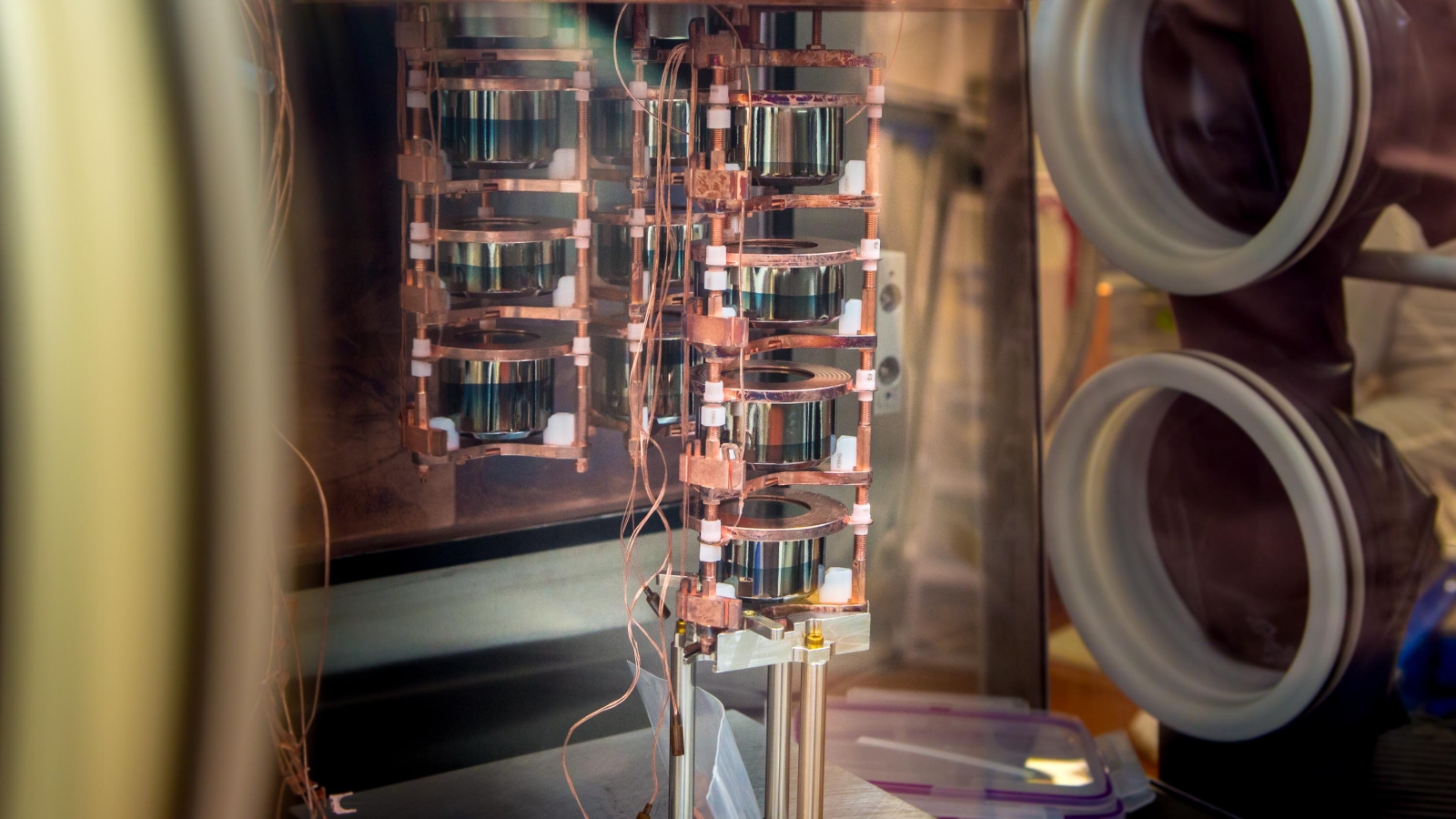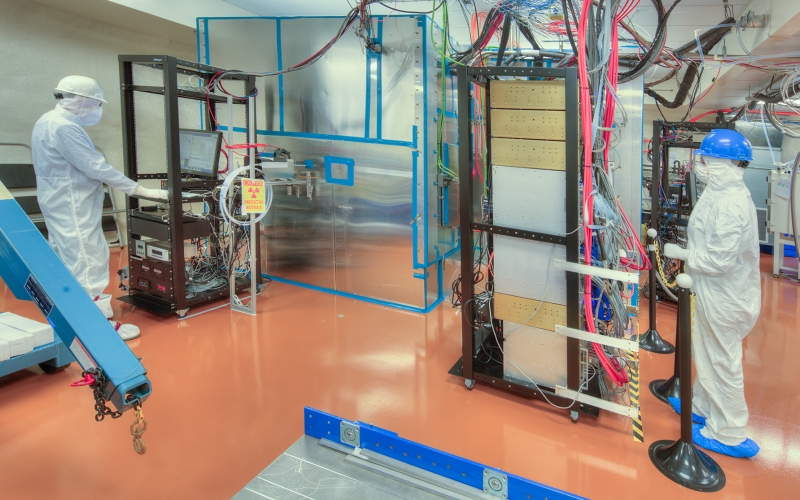
A string of germanium detectors inside a cleanroom glovebox on the 4850 Level of Sanford Lab, before they were installed in the Majorana Demonstrator in 2016.
Researchers have not seen the copper glow of the Majorana Demonstrator’s internal detector since 2016. Sealed behind six layers, including 5,200 lead bricks and two heavy copper shields, the Majorana Demonstrator has recorded a steady stream of data that will inform the next-generation neutrinoless double-beta decay experiments. But how do researchers know if the information they’re receiving is accurate? How do they know something hasn’t gone amiss deep inside?
Simple. They use an advanced calibration system that allows them to monitor the performance of the germanium detectors that make up the heart of the demonstrator. Ralph Massarczyk, staff scientist at Los Alamos National Laboratory, designed and created the calibration system used by the Majorana Demonstrator collaboration.
“In a typical detector,” Massarczyk explains, “there is enough natural background that you can easily calibrate a detector. But with Majorana, you have a very minimal background, which is not enough to determine its performance.”
Without substantial background data, researchers don’t know if the background is stable or not. The detector could be reporting events at inaccurate energy levels or even missing them completely. So, to calibrate this extremely sensitive detector, a calibration source is used to produce a standard set of well-known physics events that researchers can use to understand detector performance.
Typically, the collaboration uses thorium, a naturally occurring, slightly radioactive material that creates signatures the Majorana Demonstrator can easily read. The only problem with this source is that the signatures it produces are at a slightly higher energy level than that at which neutrinoless double-beta decay is expected to occur.
For a more ideal calibration, Massarczyk and his team got a special delivery: a hundred million atoms of Cobalt-56, a slightly radioactive isotope created in particle accelerators and used mostly in the medical field. The source underwent several “swipe tests” to ensure no leaks had occurred.
“Cobalt-56 is an ideal source. It produces a lot of events, and those events are at the exact energy where we expect to see a neutrinoless double-beta decay event,” Massarczyk said.
If it is such a perfect indicator, why don’t researchers use it every time?
“Cobalt-56 has a really short half-life, only 77 days,” said Massarczyk. “This means that at the end of 77 days, only one-half of the source will be left. After waiting another 77 days, only one-fourth will be left. After a year, the source is gone.”
Thorium, on the other hand, lasts for years. Indeed, the collaboration has been using its thorium source for five years, Massarczyk said.
Delivery methods
To deliver a calibration source to the detector modules behind layers of shielding, Massarczyk designed a “line source.” In this system, a 5-meter long, half-inch thick plastic tube is inserted into a track from the outside of the shield. The tube, which carries the calibration source, is pushed along the “grooves” on the outside of each detector module, snaking its way around twice.
“It sort of resembles a helix,” Massarczyk said. “This way, the signals are distributed evenly, rather than coming from one point, allowing each detector within the modules to see activity from the same source.”
The normal rate for the Majorana Demonstrator is a few signature counts per hour. When a radioactive calibration source is included, researchers see a few thousand events per second. During its weekly calibration run, the Majorana Demonstrator sees more events in 3 hours than it would otherwise detect in the span of 120 years.
“If, while this source is inside, the demonstrator creates signals that correspond with known data, then we know the demonstrator is well-calibrated and on track,” Massarczyk said.
Looking to the future
The Majorana Demonstrator is expected to run for a few more years, so the short half-life of Cobalt-56 means it is not a sustainable calibration option for the team. That’s why this week’s calibration was so important. The data collected has been sent to analysts for interpretation.
“The main purpose for this data is to double-check the data analysis we do in the energy region 2MeV, where we expect the neutrinoless double-beta decay events to occur,” Massarczyk said.
The information gained from these tests also is of interest to collaborators with LEGEND (Large Enriched Germanium Experiment for Neutrinoless ββ Decay), who are trying to perfect the next-generation neutrinoless double-beta decay experiment.
“As they plan a ton-scale experiment, researchers want to know if the materials are clean enough, if the shielding is working and how far underground they need to go,” said Massarczyk. “Understanding the backgrounds gives us important information to make those decisions.”
